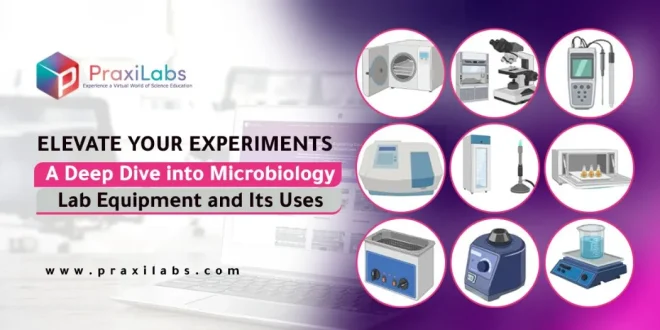Last Updated on August 22, 2025 by Muhamed Elmesery
Microbiology lab is a specialized laboratory designed for conducting experiments and research on microorganisms such as viruses, bacteria, fungi, algae, and protozoa. This type of laboratory is equipped with specialized tools and equipment to handle microorganisms safely, as well as sterile environments and containment systems to prevent the spread of infection and infectious agents.
In this blog post we will learn more about the most critical and basic microbiology lab equipment and their various uses. Let’s explore the key pieces of microbiology lab equipment and shed light on how they are utilized for laboratory experiments.
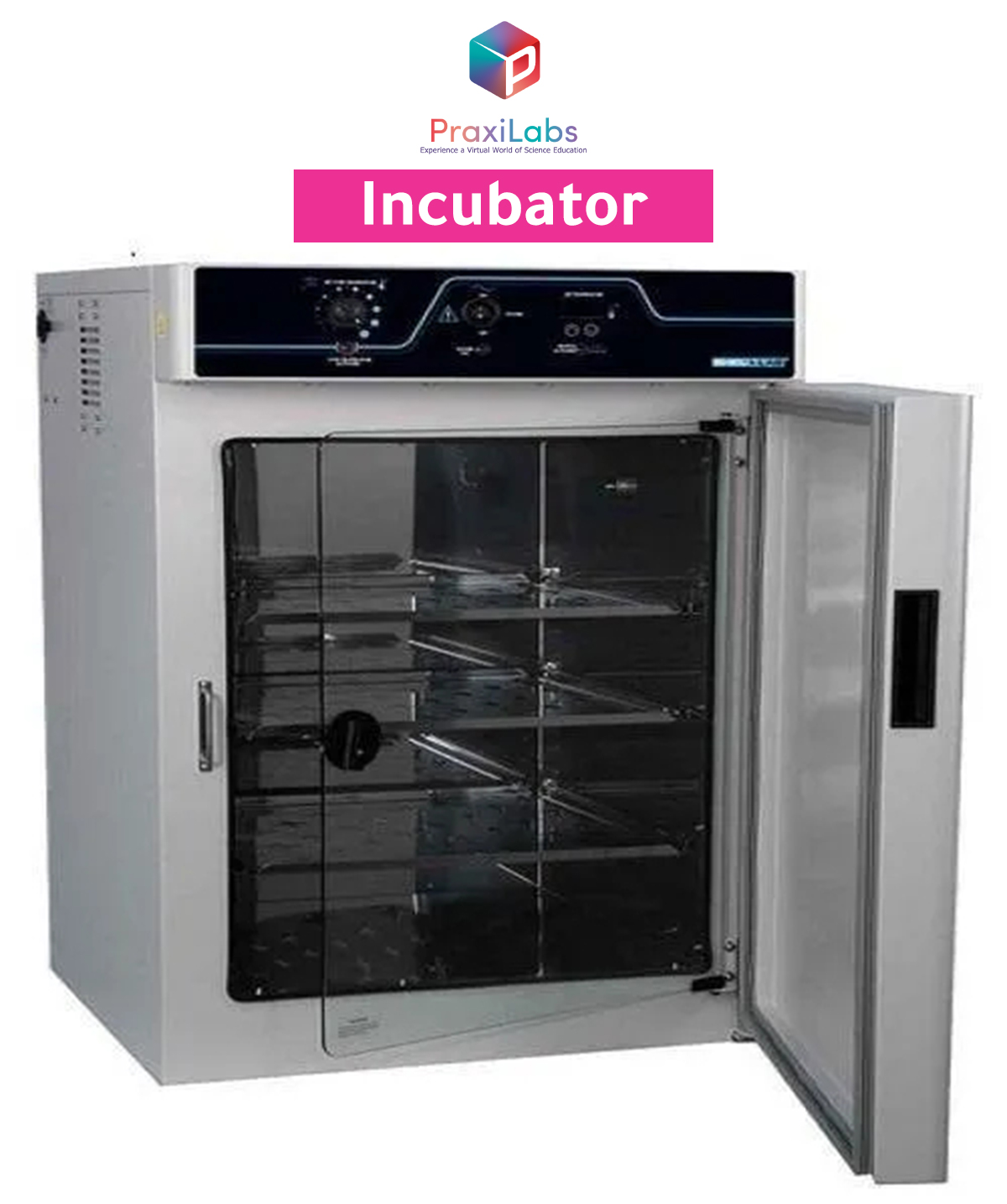
Table of Contents
What equipment is used in a microbiology lab?
Incubator
An incubator is microbiology lab equipment that is used for the growth and maintenance of microorganisms and cultures by providing the optimal temperature, pressure, and moisture according to the purpose of the experiment and the workload of the laboratory. The principle of the incubator is based on maintaining a proper atmosphere for the growth of microorganisms.
Incubators are widely used in cell culture, stem cell research, pharmaceutical studies, and biochemical experiments.
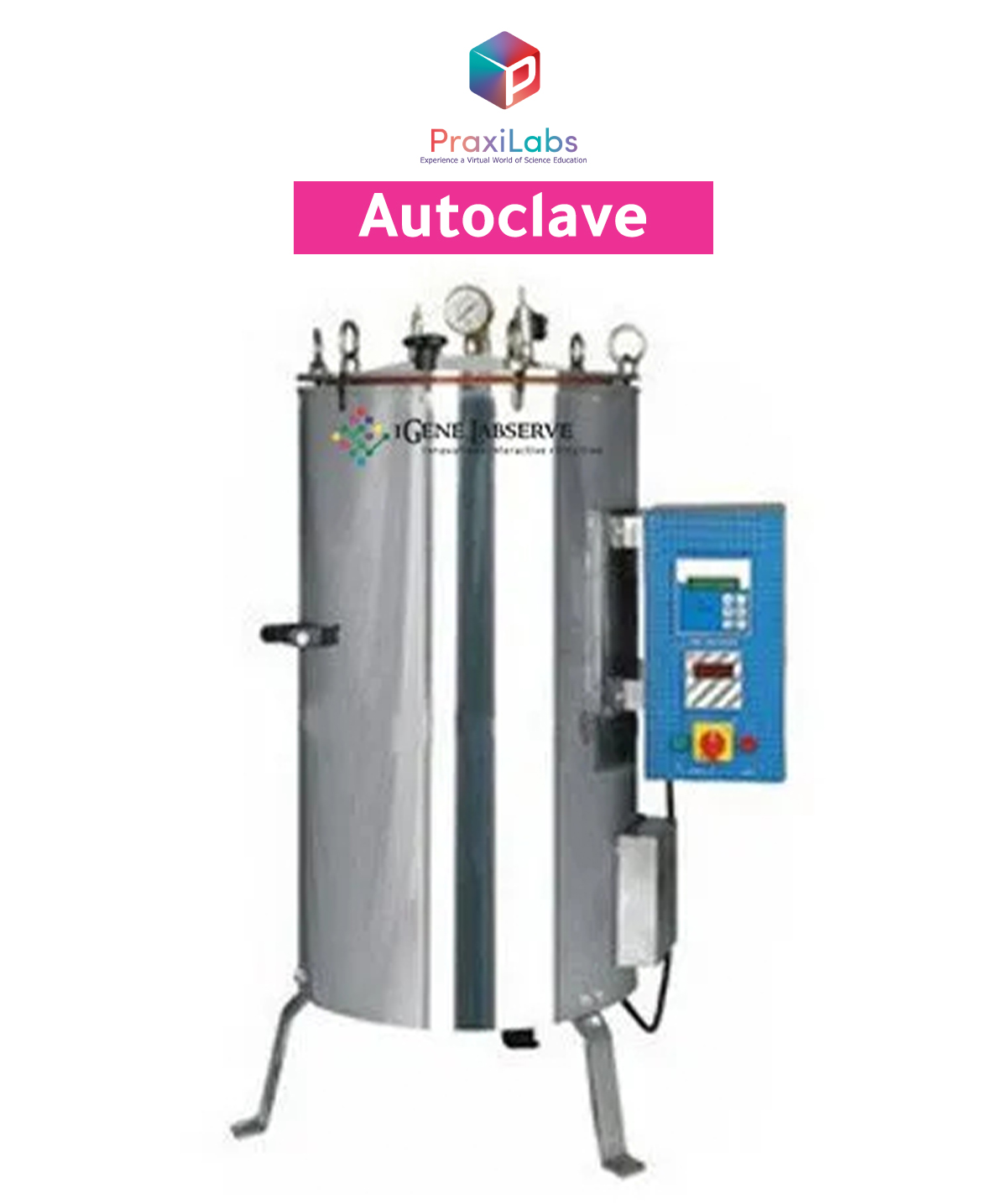
Autoclave
An autoclave is a pressurized chamber which is used for sterilization and disinfection processes depending on the combination of pressure, time, and steam.
The principle of the autoclave is based on the fact that all items to be sterilized come into direct contact with the steam (the sterilization agent) for a certain period and at a specific temperature regardless of the type of the material (e.g.: glassware , plastic ,et).
Autoclaves are mostly used for the sterilization and disinfection of equipment in microbiology labs with the capacity of sterilizing a large number of items at once.
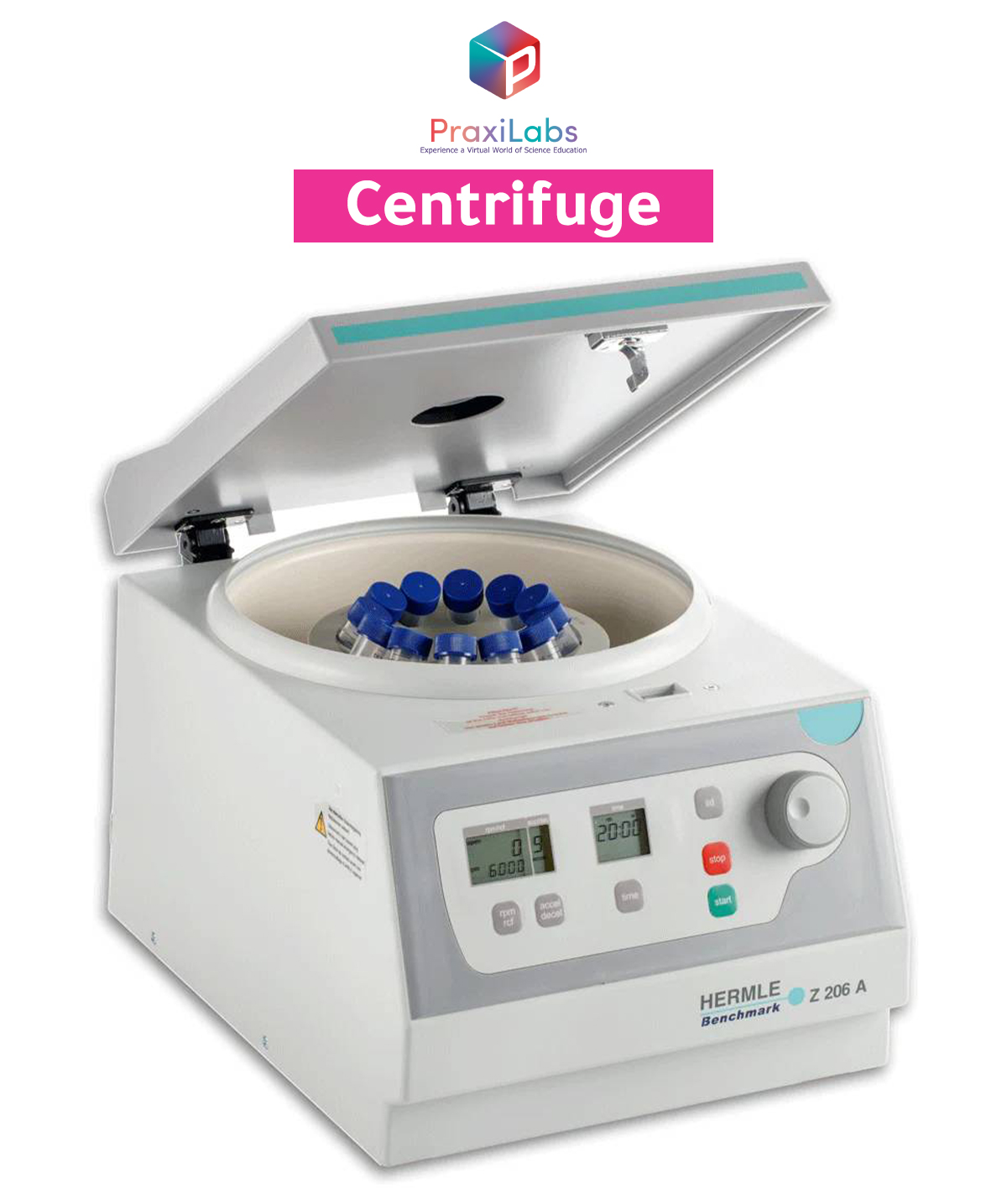
Centrifuge
A centrifuge is a microbiology lab equipment used to separate substances by density using centrifugal force ( it allows the rotation of an object about an axis, where an outward force is applied perpendicular to the axis). It facilitates different components of a mixture depending on their specific gravity.
The centrifuge operates on the principle of sedimentation, where the high rotation speed causes:
- Denser particles to move away from the center and settle at the bottom.
- Smaller and less dense particles to be forced towards the center and collected at the top
The primary application of the centrifuge is to separate the particles suspended in a mixture. It is widely used in microbiology to separate blood components and cellular organelles, isolate proteins, purify DNA, and more.
To educate your students about the centrifuge and its role, you can rely on simulations such as the RNA Extraction and Preparation of Washed Red Blood Cells Virtual Lab from PraxiLabs where students can interact with different objects and thoroughly learn the role of centrifuge.
Deep Freezer
A deep freezer is an important device in microbiology labs. It is based on the principle that under extremely low temperatures, there is minimal microbial growth which allows for the protection and preservation of different substances.
A deep freezer is used for the long-term preservation of items such as cultures, biological samples, injections, and certain equipment in microbiology laboratories without any changes.
Microscope
A microscope is a device used for viewing organisms that are too small to be seen with the naked eye. Microscopes vary ,ranging from simple hand-held magnifying glasses to electron microscopes that require special training to use.
The basic principle of a microscope is magnification. Based on the relative position of the object to the lens or electromagnets, different positions, qualities, and magnification of the image can be achieved.
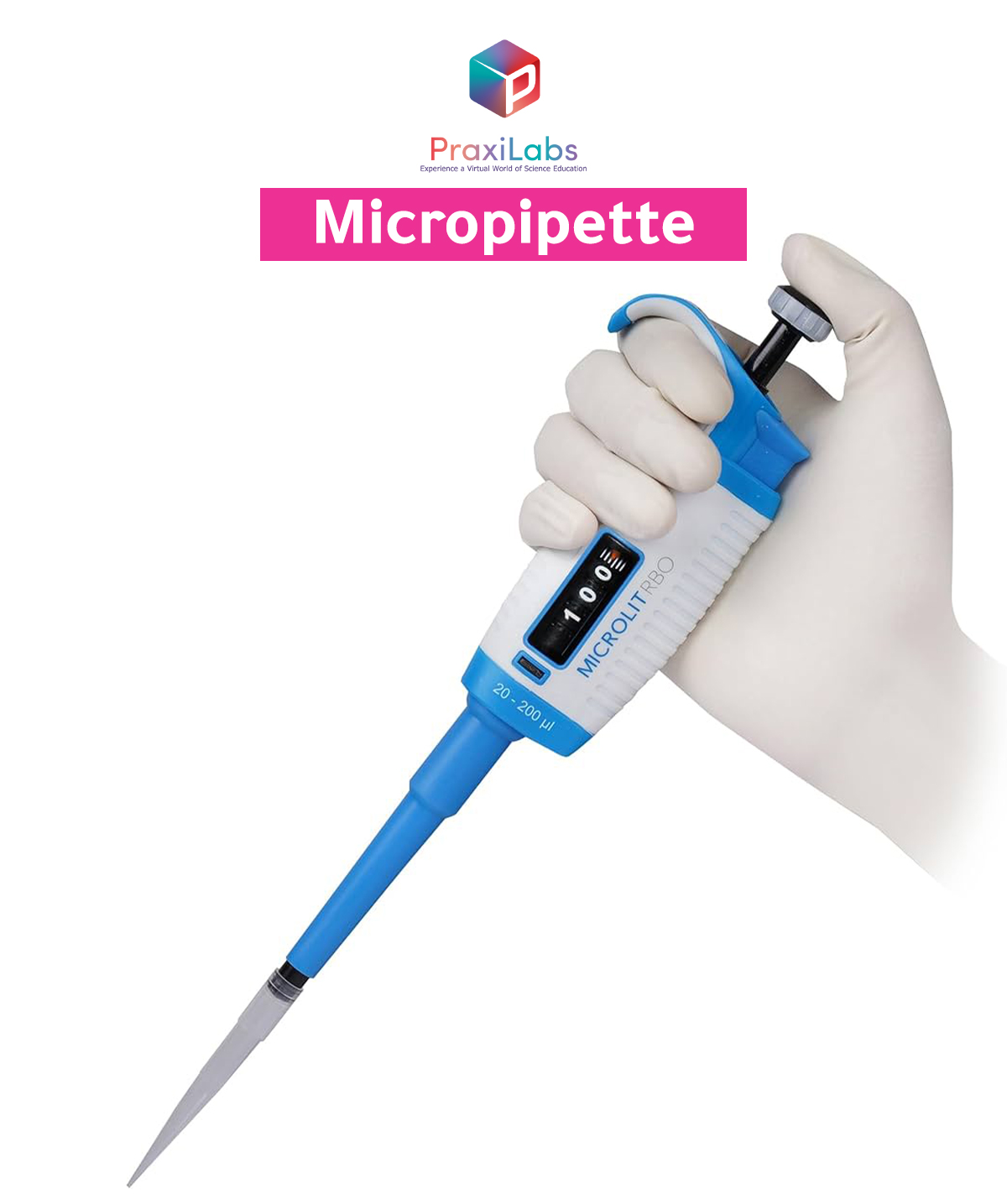
Micropipette
A micropipette is an essential microbiology lab equipment for measuring and transferring small amounts of liquids accurately and precisely with a volume range between 1 and 1000 µl. It is susceptible to damage from many organic solvents.
At PraxiLabs, the microbiology virtual labs provide your students with an opportunity to explore the different parts and functions of micropipettes, adjust volume settings, and learn about the benefits of microscale experimentation .
Pick the Best Virtual Plan or You
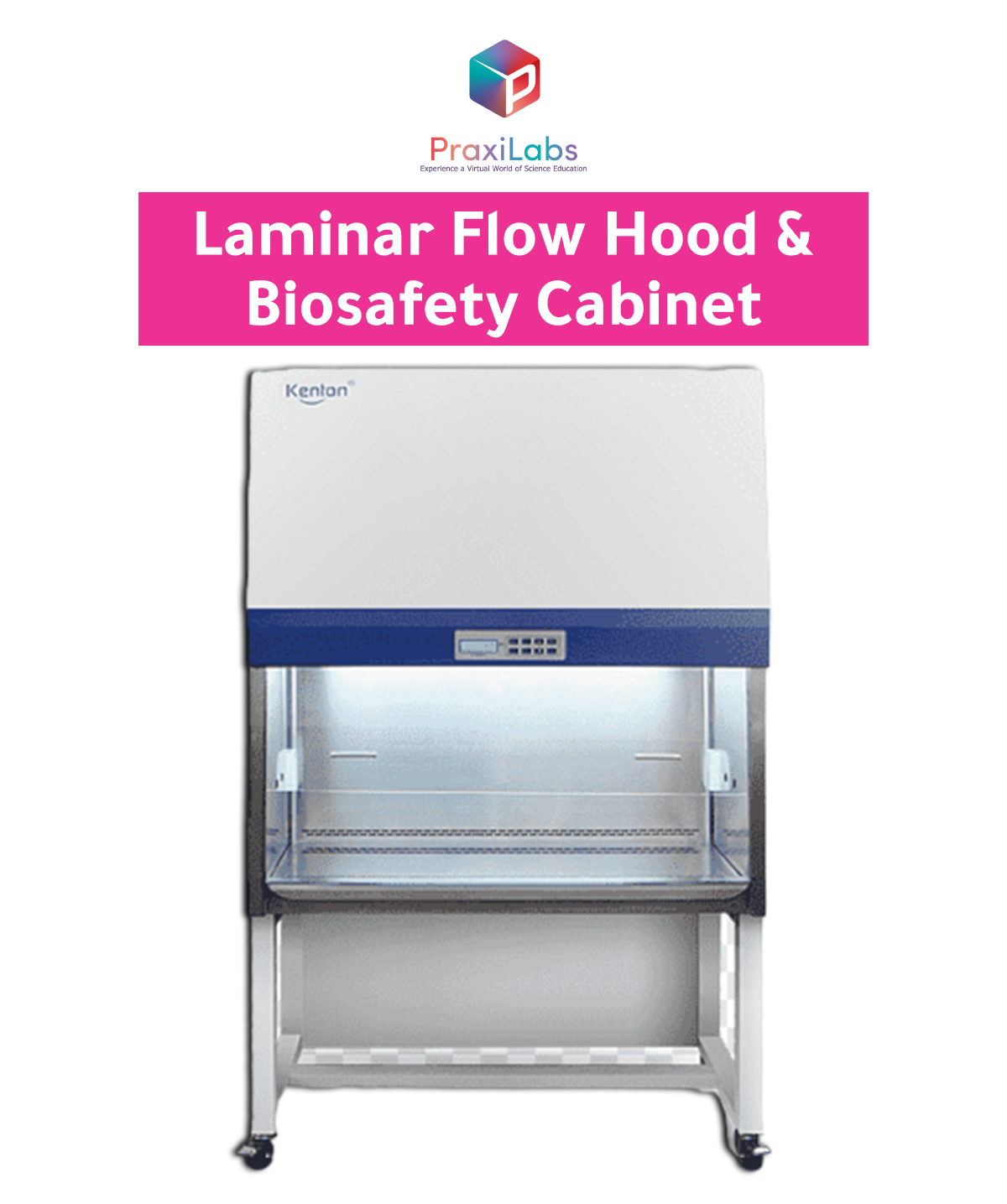
Laminar Flow Hood & Biosafety Cabinet
A Laminar Hood is a closed device used for processes or instruments sensitive to microbial contamination. It is made of stainless steel to eliminate joints and corners, which helps prevent the accumulation of bacterial spores. To ensure complete sterilization, the laminar airflow must be turned on 15 minutes before starting and the workstation should be cleaned with ethanol before and after use.
Biosafety cabinets are microbiology lab equipment that designed to reduce the risk of infection for personnel working in the lab. They are used in microbial inoculation and isolation studies. They have built- in HEPA filters to remove pathogens from the air, and prevent them from escaping into the surrounding environment.
pH Meter
pH meter is used to detect the pH of the media prior to experiments and to monitor the pH level during experiments. The device is used in the preparation of stock solutions and culture media used for the growth of microorganisms.
Hot Plate
A hot plate is a tabletop heating system. It produces heat through the flow of electricity. It is used for water baths and to heat glassware.
Magnetic Stirrer
A magnetic Stirrer is a device that provides both mixing and maintaining the chemical solutions or the mixtures at a certain temperature and for a specific time (this is done with the help of the magnetic bar).

Vortex Mixture
A vortex Mixture or vortexer agitates or stirs the solutions in the flask or tube for a specific duration and at a specific speed.
PraxiLabs offers micro-biology virtual labs that include a set of hands-on experiments designed to support students’ understanding of the principles of microbiology.
What equipment do you need to be a microbiologist?
Microbiologists need various equipment including a microscope, incubator, centrifuges, autoclave, oven, deep freezer, pH meter, magnetic stirrer, vortex mixer, hot plate, laminar flow hood & biosafety cabinet.
Other basic equipment includes test tubes, glassware, slides, Petri dishes, culture media, pipettes, micropipettes, inoculation loops, and more.
What is needed in a microbiology lab?
Tools or microbiology lab equipment such as pipettes, test tubes, trays , Petri dishes, culture media, micropipettes, inoculation loops are needed. Equipment such as bunsen burner, shakers, colony counter, homogenizer, hot air oven, laminar air flow, spectrophotometer, water bath, water distiller and more are also important in microbiology labs.
How to setup a microbiology lab?
To set up a microbiology laboratory, you need careful planning, dedication, and attention to detail. Let’s explore the various stages of establishing a microbiology lab, from conceptualization to operation.
Defining Your Research Focus
Before setting up a microbiology laboratory, it’s important to define your research focus. Are you interested in medical microbiology, environmental microbiology, or industrial applications? Clearly outlining your objectives will guide your equipment and supply choices.
Selecting a Suitable Space
Choose a space that meets the requirements of your research and offers room for expansion. Consider factors like ventilation, accessibility, and proximity to other research facilities.
Microbiology Lab Equipment
Choose the suitable microbiology lab equipment. Microscopes, autoclaves, ovens, deep refrigerators, culture media, pipettes, and safety gear are just a few essentials that will facilitate your research in selecting laboratory equipment.
Designing the Layout for Efficiency
Optimize the lab’s layout to improve workflow and efficiency. Keep safety in mind and arrange workstations logically for a smooth research process.
Setting Up Workstations
Different research tasks require different setups. Create designated workstations for microscopy, culturing, and data analysis to streamline your work.
Electrical and Ventilation Considerations
Microbiology labs rely on specialized electrical and ventilation systems. Ensure that your lab meets the necessary requirements to maintain a controlled and safe environment.
Ensuring Laboratory Safety
Safety is paramount in a microbiology lab. Adhere to biosafety level classifications, implement waste management protocols, and provide proper training to lab personnel.
A Comprehensive Guide to Microbiology Lab Safety … Read more!
Funding Your Microbiology Laboratory
Establishing a lab requires financial investment. Explore grant opportunities, partnerships, or crowdfunding to secure the necessary funding.
Training and Skill Development
Equip yourself and your team with the necessary skills. Attend workshops, seminars, and training sessions to stay updated on the latest techniques and methodologies.
Source: Building Your Own Microbiology Laboratory
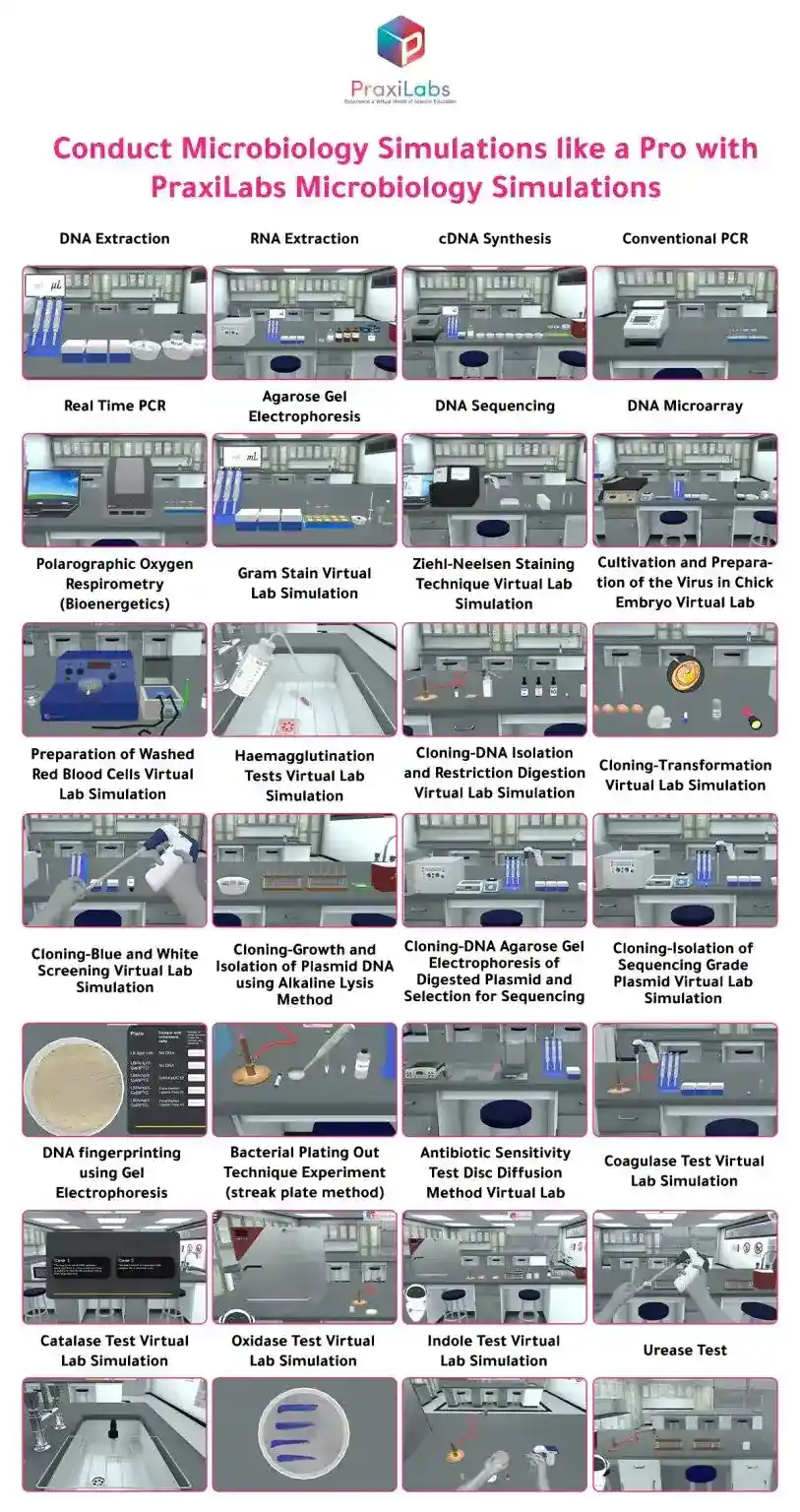
Conduct Microbiology Simulations like a Pro with PraxiLabs Microbiology Simulation Course Package
If you’re eager to explore the fascinating world of microbiology through immersive and interactive simulations, PraxiLabs offers a range of microbiology simulations that provide access to a diverse array of virtual lab simulations designed to enhance your students’ understanding of microbiology techniques and principles:
- DNA Extraction
- RNA Extraction
- cDNA Synthesis
- Conventional PCR
- Real Time PCR
- Agarose Gel Electrophoresis
- DNA Sequencing
- DNA Microarray
- Polarographic Oxygen Respirometry (Bioenergetics)
- Gram Stain
- Ziehl-Neelsen Staining Technique
- Cultivation and Preparation of the Virus in Chick Embryo
- Preparation of Washed Red Blood Cells
- Haemagglutination Tests
- Cloning-DNA Isolation and Restriction Digestion
- Cloning-Transformation
- Cloning-Blue and White Screening
- Cloning-Growth and Isolation of Plasmid DNA using Alkaline Lysis Method
- Cloning-DNA Agarose Gel Electrophoresis of Digested Plasmid and Selection for Sequencing
- Cloning-Isolation of Sequencing Grade Plasmid
- DNA fingerprinting using Gel Electrophoresis
- Bacterial Plating Out Technique Experiment (streak plate method)
- Antibiotic Sensitivity Test Disc Diffusion Method
- Coagulase Test
- Catalase Test
- Oxidase Test
- Indole Test
- Urease Test
Elevate your students’ Learning Retention and Engagement with PraxiLabs’ Microbiology virtual labs!
 PraxiLabs A virtual world of science
PraxiLabs A virtual world of science

